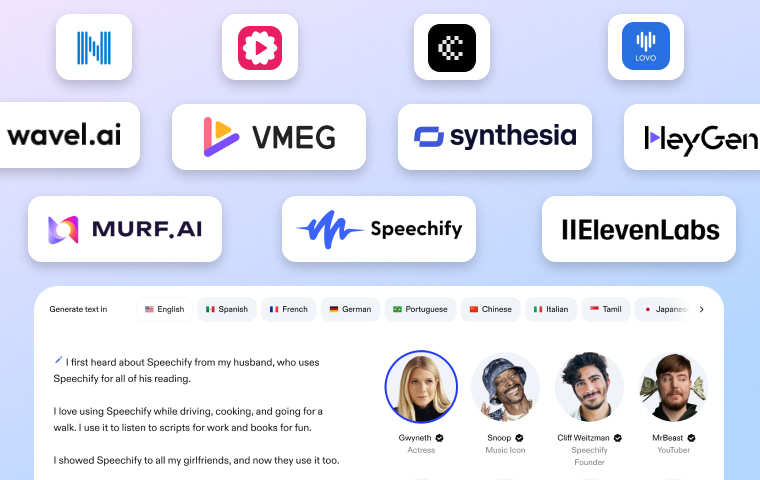
As the global demand for more natural and multilingual voice solutions continues to grow, Text-to-Speech (TTS) tools have become increasingly important in education, content creation, and business communication.
In 2024, neural and AI-generated voices captured over 67% of the market share, reflecting a strong shift toward more lifelike audio experiences.
Meanwhile, English remained the most widely used language, though languages like Hindi are expanding rapidly.
With Asia-Pacific emerging as the fastest-growing region, the landscape for TTS and AI voice tools is more competitive than ever.
Why Look for a Speechify Alternative in 2025?
Speechify has become one of the better-known tools in this space, offering not only high-quality voice synthesis but also translation features that support diverse content needs. However, users often look for alternatives to suit specific preferences—whether it's pricing, voice variety, interface flexibility, or expanded translation capabilities.
In this guide, we explore the top 10 Speechify alternatives that deliver comparable or enhanced features for TTS and voice-based translation. These platforms offer solutions for creators, professionals, and learners seeking reliable tools for converting text into speech or adapting content across languages.
Top 10 Speechify Alternatives
VMEG AI – All-in-One for TTS, Subtitles & Video Translation
VMEG AI is a comprehensive platform designed for video creators and educators. It supports text-to-speech, subtitle generation and translation, video dubbing, and lip-syncing—all in one interface.

Pros
- Supports 170+ languages and regional accents for TTS and dubbing
- Generates synchronized subtitles for video translation
- Offers flexible export options and workflow automation
- Designed for creators working across YouTube, e-learning, and social media
Cons
- Lacks a desktop or mobile app; available only via browser
HeyGen – AI Avatar Videos with Voice & Subtitle Translation
HeyGen specializes in avatar-based video generation, combining TTS, subtitles, and multilingual voiceovers. It’s particularly helpful for business presentations and social media videos.
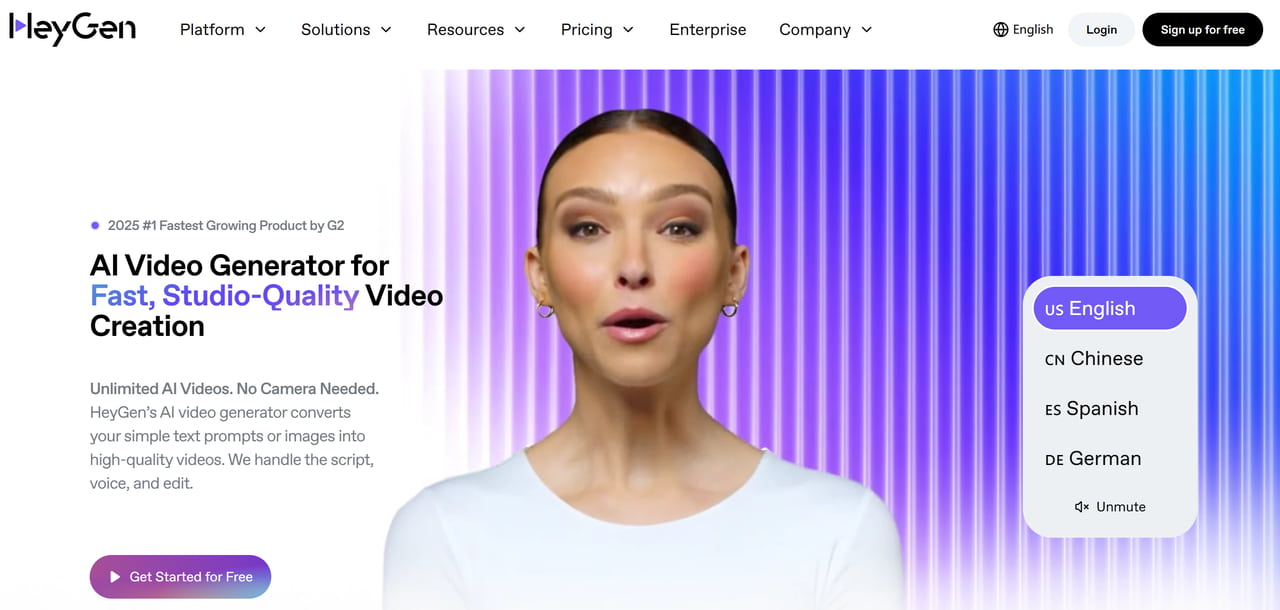
Pros
- Realistic AI avatars for personalized videos
- Built-in subtitle translation and voiceover syncing
- Integrates well with video production pipelines
Cons
- Focuses more on visuals than pure audio applications
- Voice customization is limited compared to voice-specific platforms
Wavel AI – Enterprise-Grade Dubbing & Text-to-Speech
Wavel AI provides professional voice dubbing and localization services for global media and learning platforms. It combines high-quality voices with a strong translation engine.
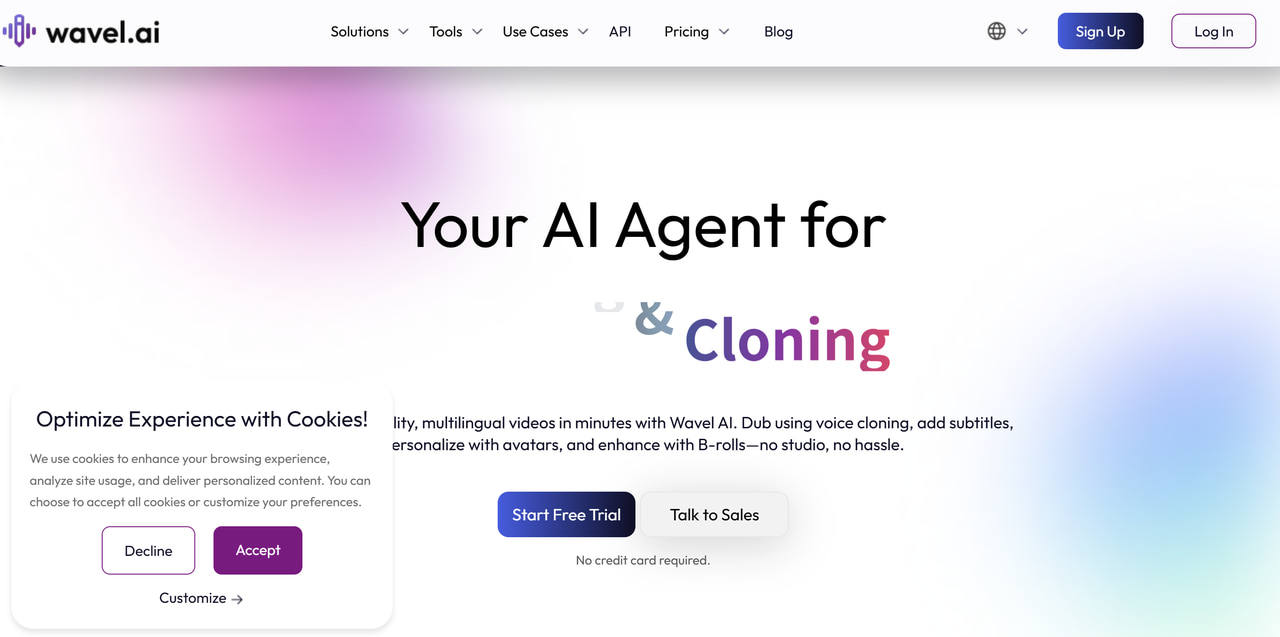
Pros
- Offers dubbing in over 20 languages with tone control
- Includes subtitle translation and voice-sync options
- Suitable for large-scale enterprise projects
Cons
- Pricing is more suited for organizations than individuals
- Interface may take time to navigate for beginners
Fliki – Quick Voiceovers & Video Creation with AI Voices
Fliki focuses on fast TTS and short-form video generation using written scripts. It’s often used by marketers and social media content creators.
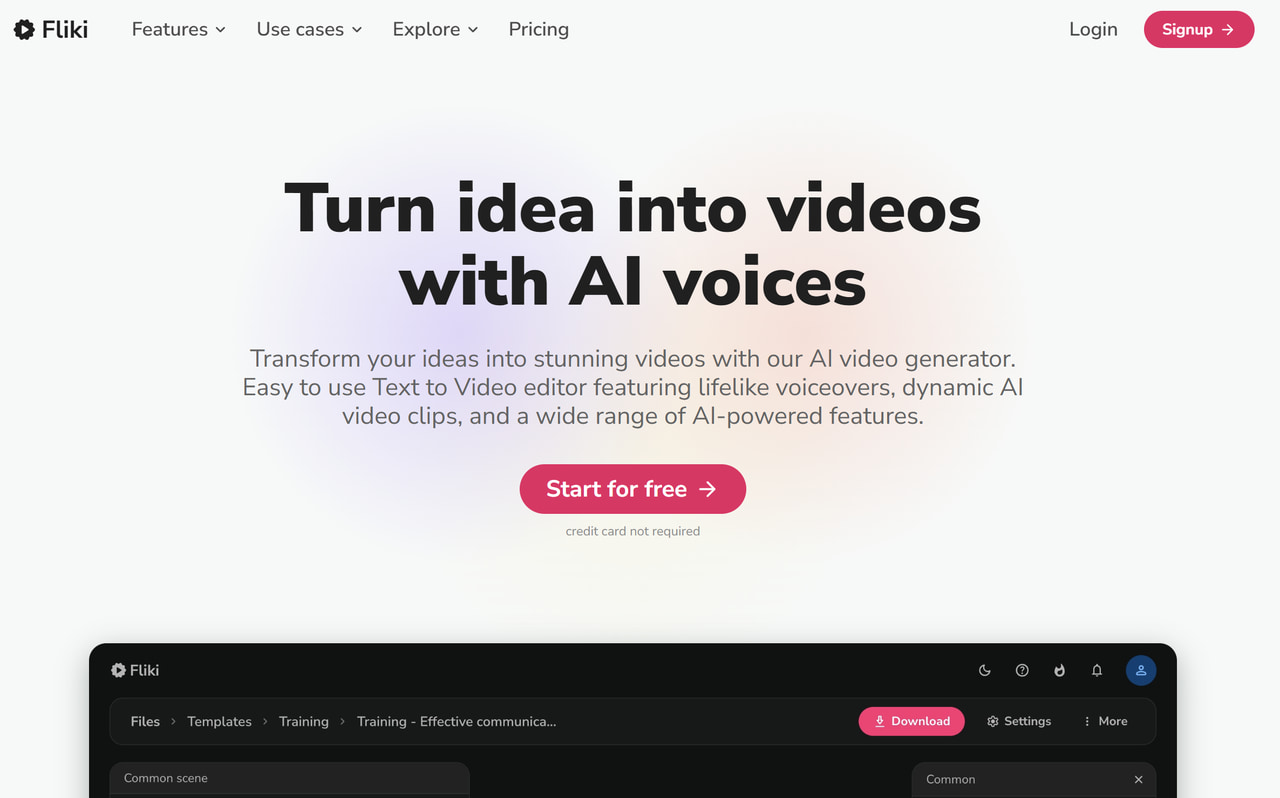
Pros
- Supports multiple languages and natural-sounding voices
- Quick video export from blog posts or scripts
- User-friendly interface for non-technical users
Cons
- Translation is not as accurate for complex content
- Limited customization of voice output
Lovo AI – Human-Like Voices for Narration & Media Projects
Lovo AI is a voice generation platform that delivers expressive, human-like voices for audio content and multimedia storytelling.
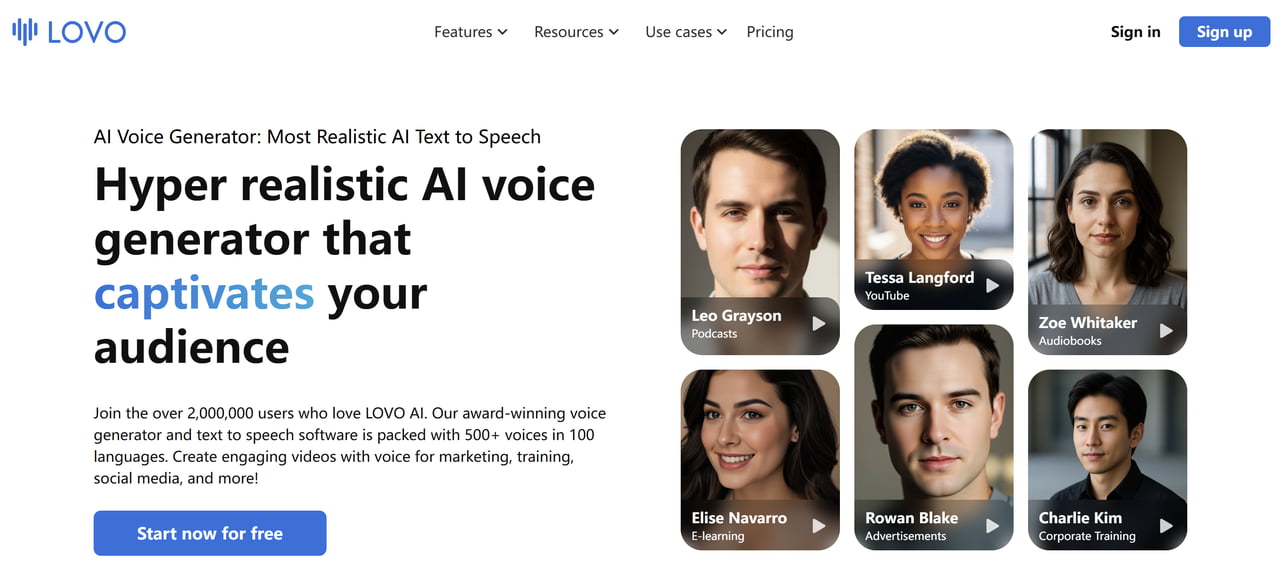
Pros
- Broad voice library with emotional tone options
- Script editor with real-time voice preview
- Voiceover and subtitle support in various languages
Cons
- Free tier is limited in length and number of exports
- Translation accuracy may vary by language
Synthesia – AI Video Generation with Voice & Translation Tools
Synthesia enables users to create videos using AI avatars and voiceovers in multiple languages. It’s widely used in internal training and customer-facing explainers.
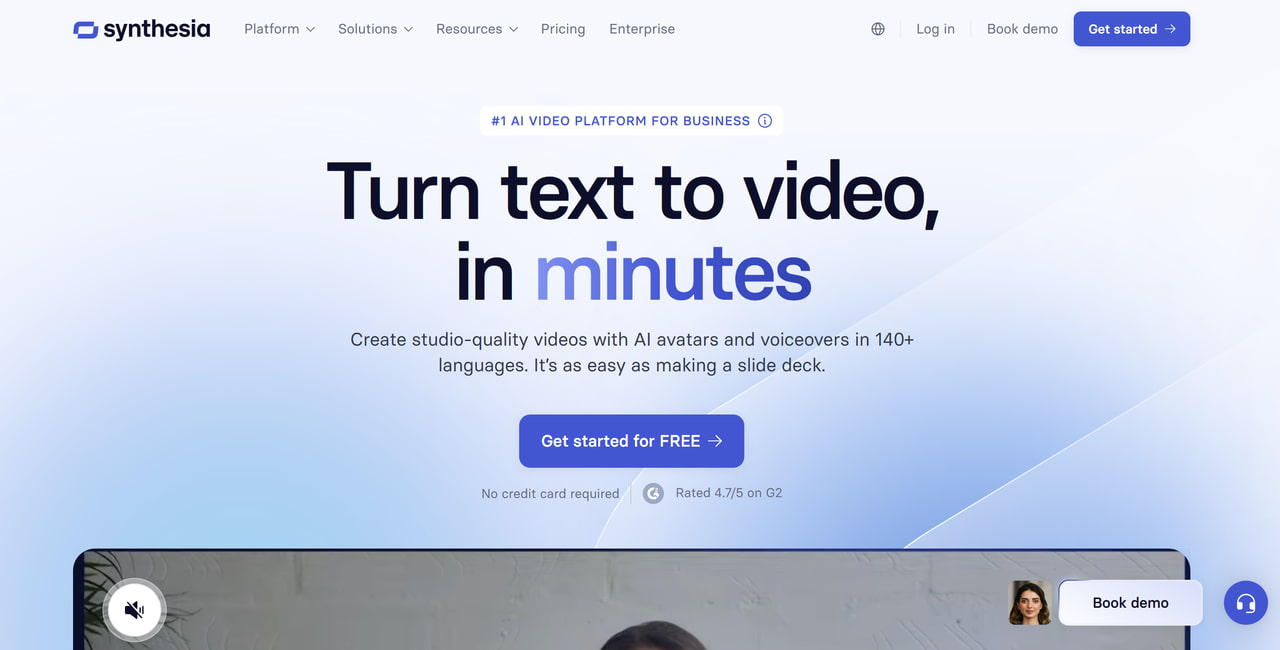
Pros
- Supports over 120 languages and accents
- Smooth subtitle integration for multilingual projects
- Allows custom avatar creation for branding
Cons
- Voice style options are less flexible than dedicated TTS tools
- More effective for video use than audio-focused tasks
ElevenLabs – Advanced Voice Cloning & TTS Technology
ElevenLabs is known for its advanced voice synthesis technology, including voice cloning and emotional speech delivery, ideal for immersive audio experiences.
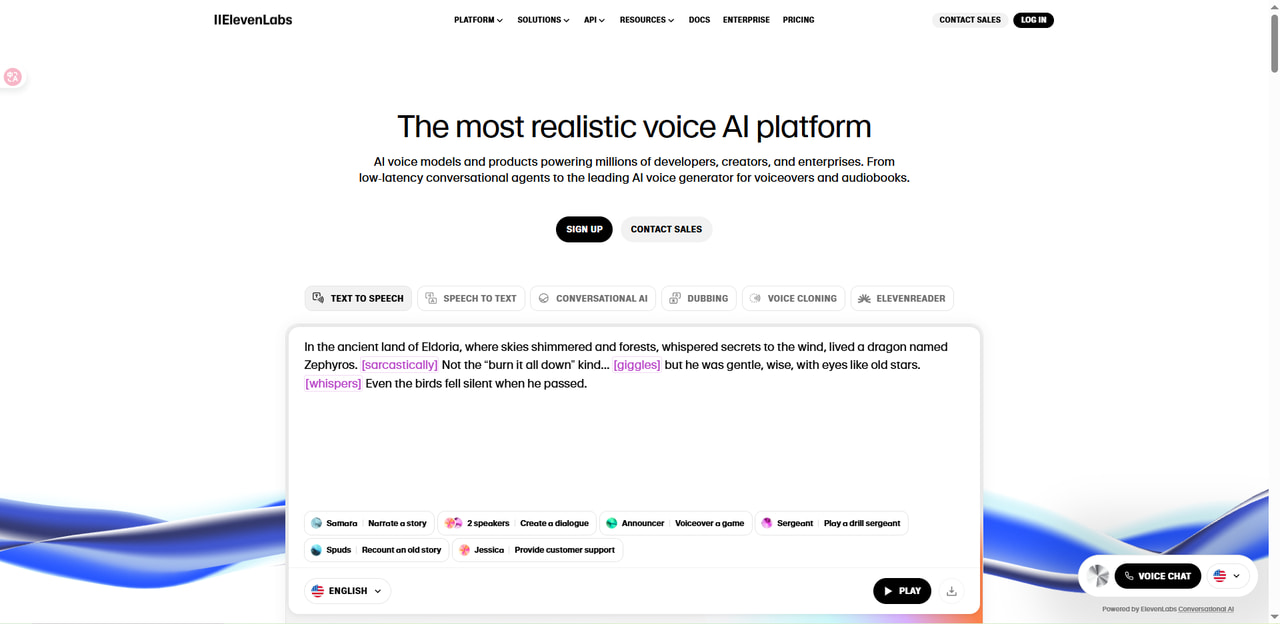
Pros
- Offers hyper-realistic voices with emotional depth
- Enables custom voice cloning and fine-tuning
- High-quality audio output for storytelling and narration
Cons
- No built-in translation or subtitle functionality
- Still developing collaborative features for teams
Murf AI – Versatile Voiceovers for Business, Learning & Podcasts
Murf AI offers a professional-grade TTS tool for teams working on presentations, learning modules, and podcasting.
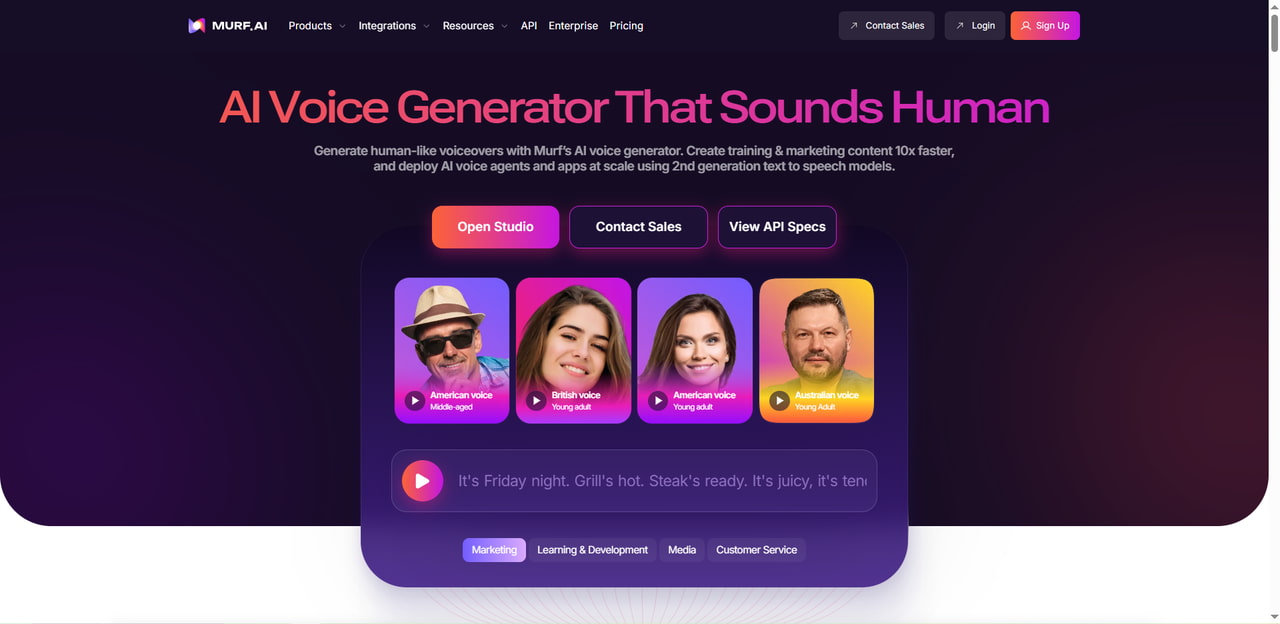
Pros
- Clean UI with timeline editing for voiceovers
- Voice pitch, emphasis, and pacing control
- Integrates with PowerPoint and video editors
Cons
- Lacks built-in translation or subtitle support
- Custom voice options require higher-tier plans
Cartesia – AI Dubbing with Emotion & Language Adaptation
Cartesia is designed for video localization, offering TTS dubbing that adapts to the emotional tone and context of the original content.
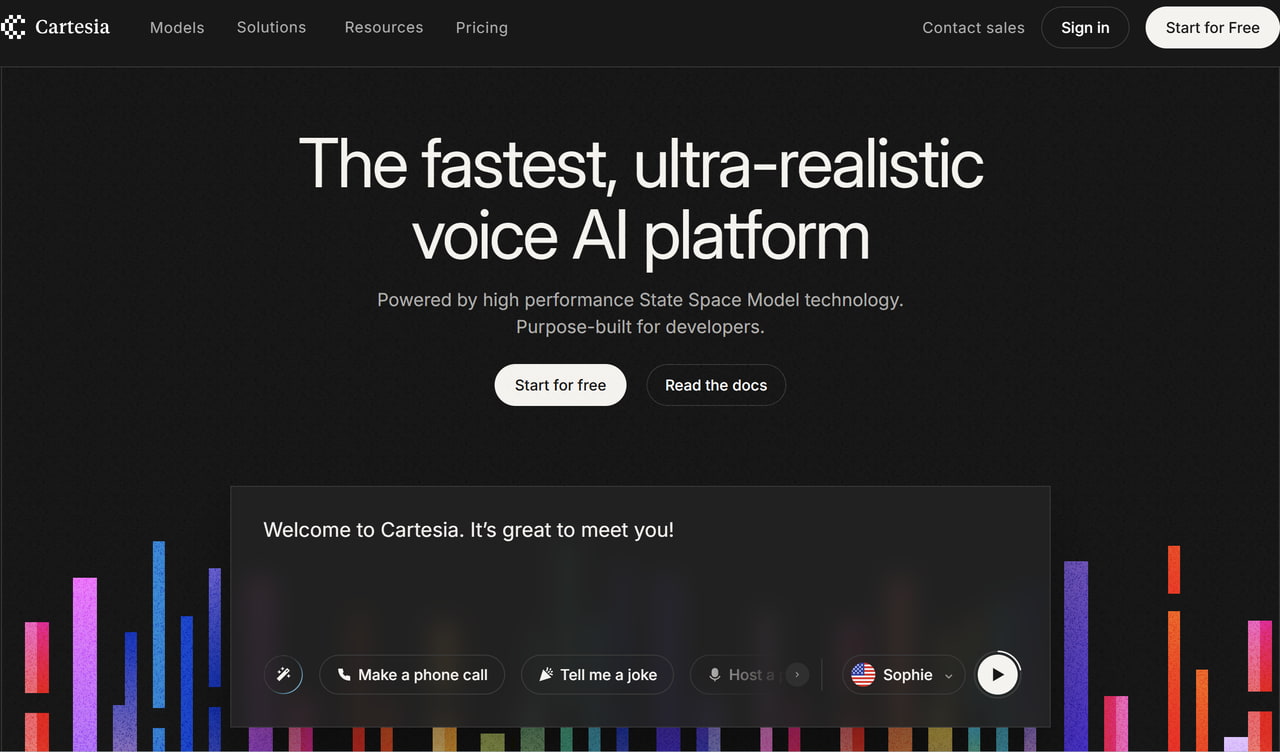
Pros
- Preserves emotional tone in translated speech
- Offers multi-language dubbing and lip sync
- Good for entertainment and educational media
Cons
- Less intuitive interface than competitors
- Limited non-video use cases
NaturalReader – Classic TTS for Reading & Educational Use
NaturalReader has long served as a go-to TTS platform for students, readers with dyslexia, and educators looking for audio support.
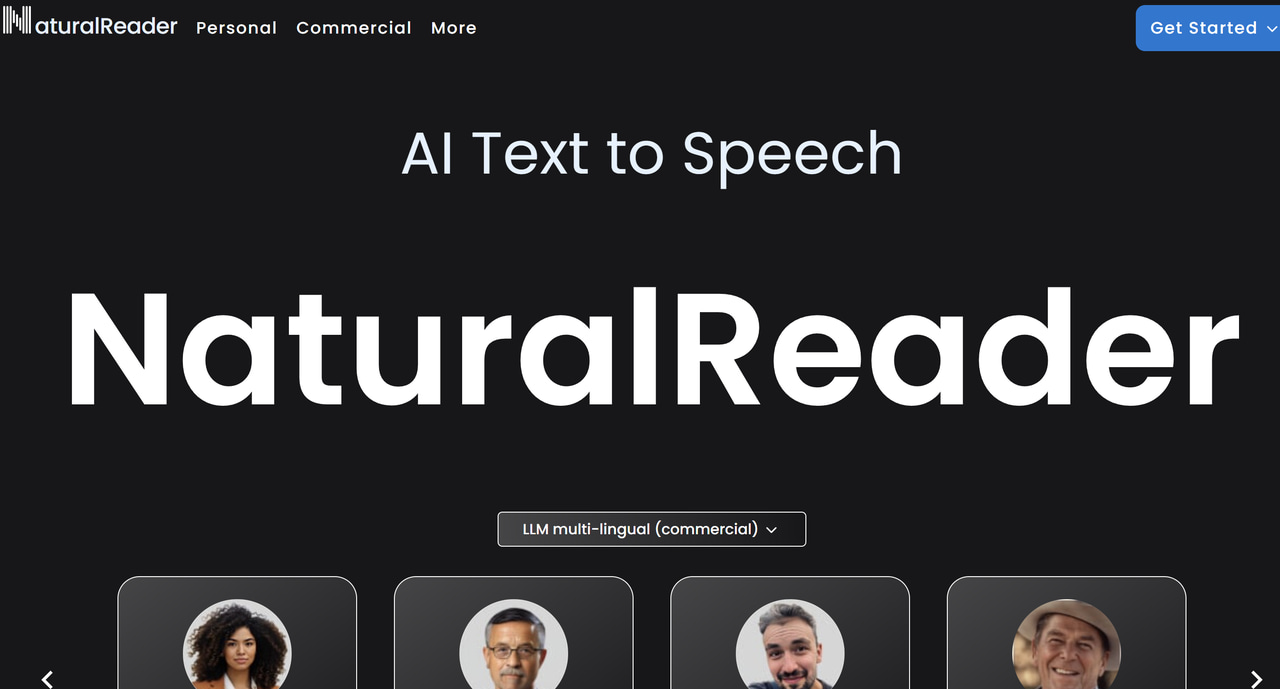
Pros
- Easy to use for reading documents, PDFs, and web content
- Offers both desktop and mobile apps
- Clear and natural-sounding voices
Cons
- No translation or video export features
- Not designed for professional content creation
Final Thoughts
When choosing the best Speechify alternative, think about your primary use case. Are you focused on voiceovers for social media, video localization, reading support, or professional narration?
Consider the following factors:
- Language and translation support
- Voice quality and emotional tone
- Export formats and integrations
- Ease of use and interface design
- Pricing flexibility
Text-to-speech and video translation tools are evolving to support a wide range of personal and professional goals.
Whether you're a student, content creator, or business communicator, choosing the right TTS platform can help expand your message across languages and formats.
Each of the above Speechify alternatives brings its own strengths and use cases—making it easier to find the tool that best fits your workflow.
FAQs
Q1. Why look for an alternative to Speechify?
A1: While Speechify is popular for text-to-speech (TTS), it has limited features for multilingual video translation, voice cloning, and integrated subtitle workflows. Users looking for more creative control or better value often explore alternatives like VMEG AI, Wavel AI, or Fliki.
Q2. What makes VMEG AI a strong Speechify alternative?
A2: VMEG AI offers a combined suite of tools for TTS, video translation, subtitle generation, AI dubbing, and lip-sync. Unlike Speechify, VMEG is designed specifically for content creators who need both audio and video language localization in one place.
Q3.Does VMEG support multiple languages for both TTS and video translation?
A3: Yes, VMEG supports over 70 languages and accents across its TTS and video translation tools. Whether you're working with subtitles, voiceovers, or full dubbed videos, VMEG enables seamless multilingual content creation.
Q4. Is VMEG web-based like Speechify?
A4: Absolutely. VMEG runs entirely in the browser—no downloads or installations required. Users can access all tools instantly from any device with an internet connection.
Q5.Can VMEG translate full videos, not just text or audio?
A5: Yes. VMEG offers AI-powered video translation, including subtitle translation, voiceover, and even AI lip-sync for more natural results. This goes beyond what traditional TTS tools like Speechify offer.